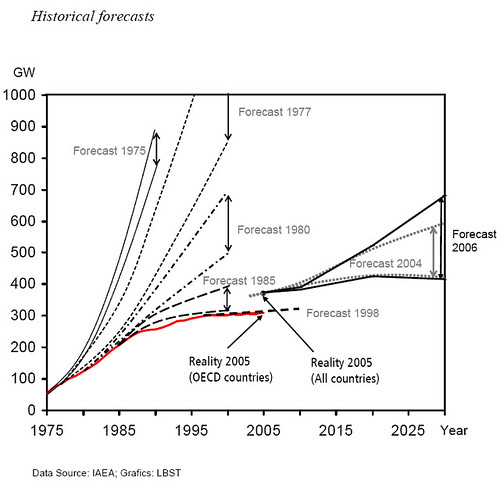This chart was made several years before Fukushima.
www.flickr.com/photos/16721844@N00/429450898/

Every two years the Nuclear Energy Agency (NEA) together with the International Atomic
Energy Agency (IAEA) publish detailed data about existing reactors, reactors under
construction, shut down reactors and also forecasts for the next 20–30 years. An early
forecasts in 1975 predicted the nuclear capacity of OECD member countries to grow to
between 772–890 GW by 1990. Based on such forecasts the uranium production capacities
were extended. But in reality, the installed capacity grew to 260 GW falling far below the
IAEA target range. The 1977 forecast was less ambitious, envisaging a range of between
860–999 GW by 2000. As the year 2000 came closer, the more modest the forecasts became
eventually predicting a capacity ranging between 318–395 GW by 2000. Actually, a total of
303 GW were installed in the year 2000. Every forecast by the IAEA in the past eventually
turned out as having been too optimistic.
